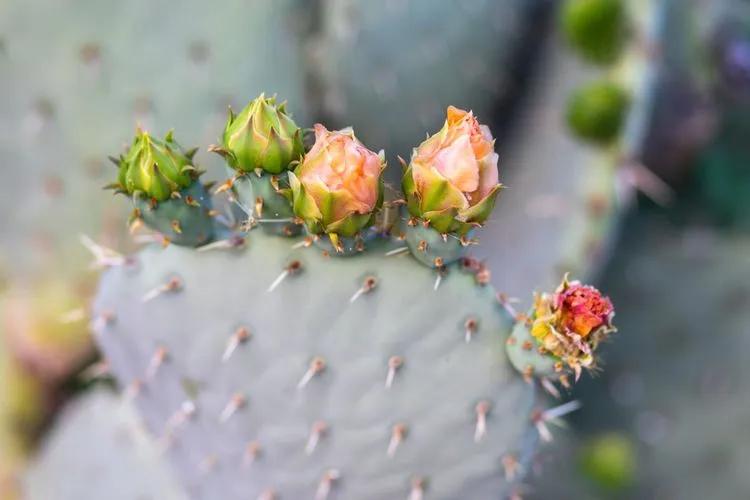 Today cacti can be found in almost every home. Many are fascinated by their "prickly" and mysterious beauty. The blooming cactus is incredibly beautiful. In addition, these exotic plants are unpretentious in care and easily adapt to any conditions. What are the most beautiful cacti? Of course, blooming cacti are very beautiful.
Today cacti can be found in almost every home. Many are fascinated by their "prickly" and mysterious beauty. The blooming cactus is incredibly beautiful. In addition, these exotic plants are unpretentious in care and easily adapt to any conditions. What are the most beautiful cacti? Of course, blooming cacti are very beautiful.
Schlumbergera cactus
 The Schlumbergera cactus has several names. For example, it is often called zygocactus. But there is also a third - a completely popular name: the Decembrist. No, no, the plant has nothing to do with the participants in the Russian opposition movement at the beginning of the century before last. The cactus got this name due to the fact that the buds, which ripen for a long time on it, bloom on the eve of Christmas. Moreover, the flowers on the zygocactus can be painted in the most unexpected colors - from scarlet to pale pink.
The Schlumbergera cactus has several names. For example, it is often called zygocactus. But there is also a third - a completely popular name: the Decembrist. No, no, the plant has nothing to do with the participants in the Russian opposition movement at the beginning of the century before last. The cactus got this name due to the fact that the buds, which ripen for a long time on it, bloom on the eve of Christmas. Moreover, the flowers on the zygocactus can be painted in the most unexpected colors - from scarlet to pale pink.
The homeland of the Schlumbergera cactus is the rainforests of Brazil. This flower, although it has thorns, is not as sharp and sharp as those of its fellows. The thorns of the zygocactus are soft and tender.
Rhipsalis
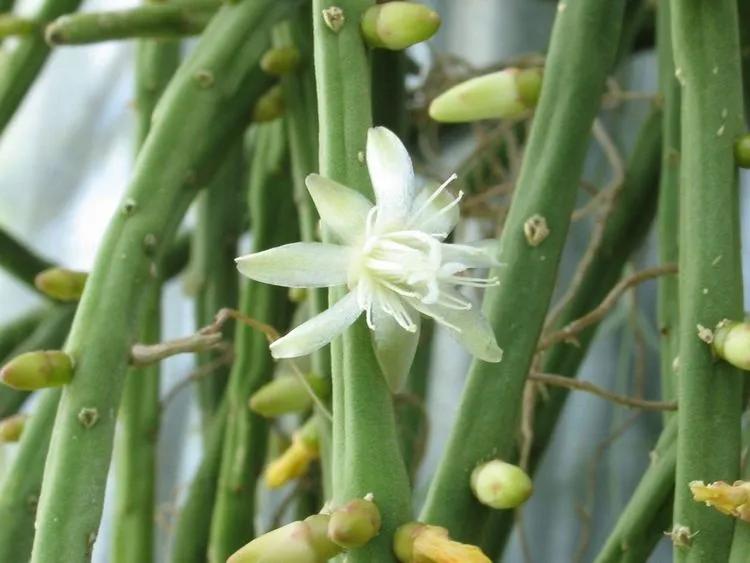 This is another cactus that cannot be pricked. Rhipsalis stems are very long and can reach a meter in length. During the flowering period, which, by the way, just like the Schlumberger cactus, falls on the first month of winter, yellow, pink and snow-white inflorescences appear on these long shoots. Rhipsalis bloom is a stunning and very exotic sight. The homeland of this plant is considered to be two regions at once, located in different parts of the world. The first of them is the same Brazil, from which the Schlumberger cactus comes from. And the second is Ceylon, which today is part of Sri Lanka.
This is another cactus that cannot be pricked. Rhipsalis stems are very long and can reach a meter in length. During the flowering period, which, by the way, just like the Schlumberger cactus, falls on the first month of winter, yellow, pink and snow-white inflorescences appear on these long shoots. Rhipsalis bloom is a stunning and very exotic sight. The homeland of this plant is considered to be two regions at once, located in different parts of the world. The first of them is the same Brazil, from which the Schlumberger cactus comes from. And the second is Ceylon, which today is part of Sri Lanka.
In nature, Ripsalis settles on trees and hangs beautifully from them. And in cultural conditions, this plant is often used to decorate balconies.
Rhipsalidopsis
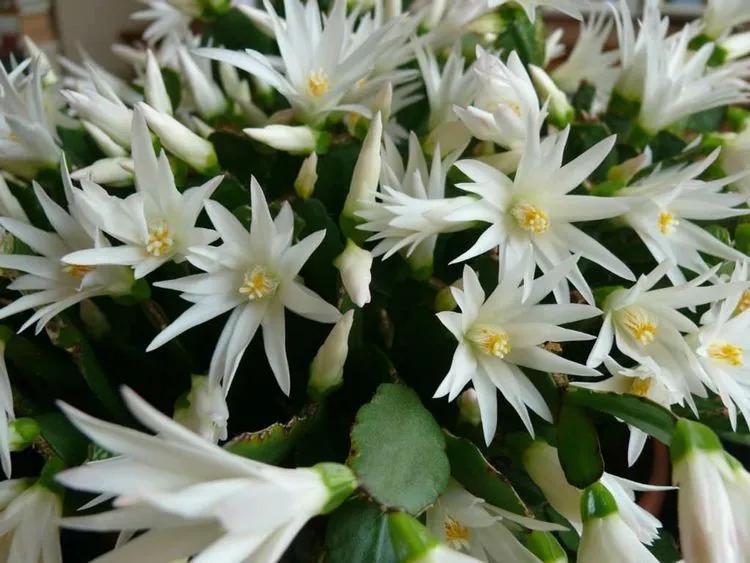 Visually, Rhipsalidopsis is very much like a Decembrist. And its name is consonant with the previous member of our top. Meanwhile, Rhipsalidopsis is an absolutely independent plant, which is often called the Easter flower by the people. And all because the flowering of this thornless cactus coincides with the great holiday of Easter. There are more than three thousand types of rhipsalidopsis. But cultural varieties, of course, are significantly less. However, even those that exist are very diverse: a distinctive feature of all varietal and hybrid Rhipsalidopsis is the bright color of the inflorescences.
Visually, Rhipsalidopsis is very much like a Decembrist. And its name is consonant with the previous member of our top. Meanwhile, Rhipsalidopsis is an absolutely independent plant, which is often called the Easter flower by the people. And all because the flowering of this thornless cactus coincides with the great holiday of Easter. There are more than three thousand types of rhipsalidopsis. But cultural varieties, of course, are significantly less. However, even those that exist are very diverse: a distinctive feature of all varietal and hybrid Rhipsalidopsis is the bright color of the inflorescences.
Gymnocalycium
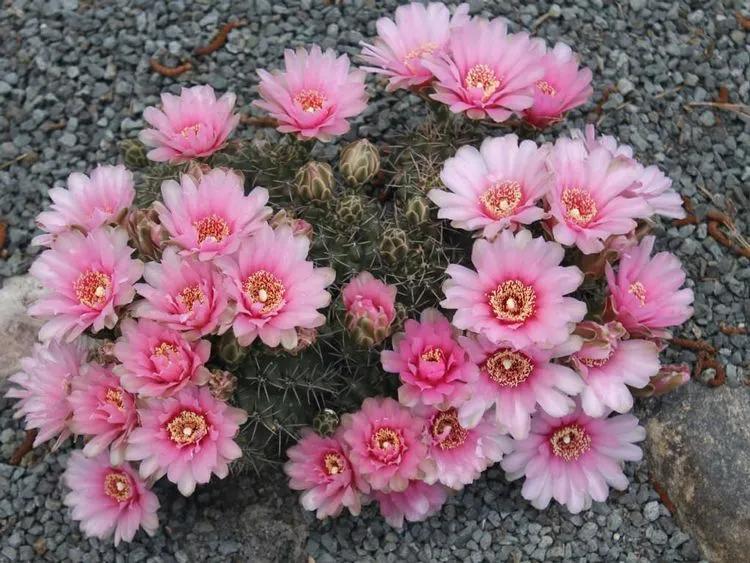 A traditional round cactus, which, unlike its previous cousins, has rather dense and dangerous thorns. If the conditions created by you for growing the gymnocalycium cactus are truly comfortable, then in the second year of life this "fat man" will bloom. Flowers in gymnocalycium may vary in color. They come in both crimson and bright pink, yellow, powdery or orange.
A traditional round cactus, which, unlike its previous cousins, has rather dense and dangerous thorns. If the conditions created by you for growing the gymnocalycium cactus are truly comfortable, then in the second year of life this "fat man" will bloom. Flowers in gymnocalycium may vary in color. They come in both crimson and bright pink, yellow, powdery or orange.
Gymnocalycium mihanovichii is one of the most popular varieties of this cactus. In it, not only flowers are unusual, but also the stem itself, which has a red-brown color that is absolutely uncharacteristic for a cactus.
Astrophytum
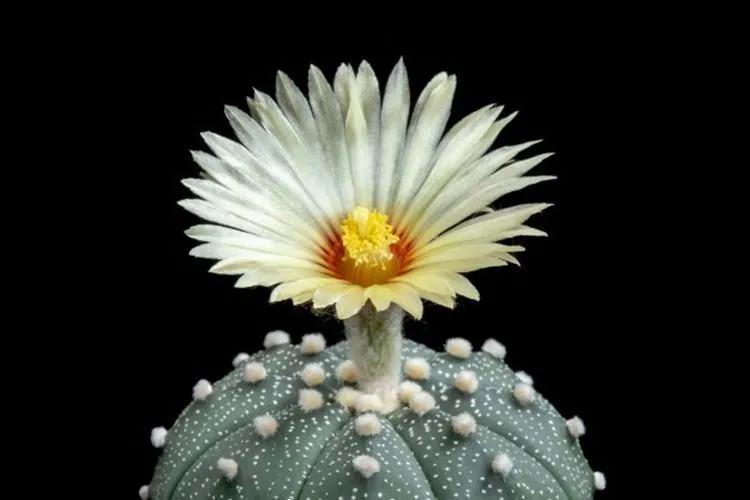 The speckled astrophytum, which is in the collection of every self-respecting fan of cacti, is very similar to a star in the firmament. Actually, it is for this similarity that the Mexicans, who have the same citizenship with the cactus, awarded him with that name. Astrophytum blooms beautifully: during the flowering period, large single flowers appear on it. But still, the secret of its decorativeness is not at all in the flowers. The fact is that its stem is covered with multiple white specks, which turn astrophytum into an impromptu map of the night sky.
The speckled astrophytum, which is in the collection of every self-respecting fan of cacti, is very similar to a star in the firmament. Actually, it is for this similarity that the Mexicans, who have the same citizenship with the cactus, awarded him with that name. Astrophytum blooms beautifully: during the flowering period, large single flowers appear on it. But still, the secret of its decorativeness is not at all in the flowers. The fact is that its stem is covered with multiple white specks, which turn astrophytum into an impromptu map of the night sky.
The Astrophytum of the variety "Medusa's Head" looks very outlandish and unusual. The pattern, in which the white dots on its stem are folded, resembles snakes swarming in the head of a mythical creature.
Echinopsis
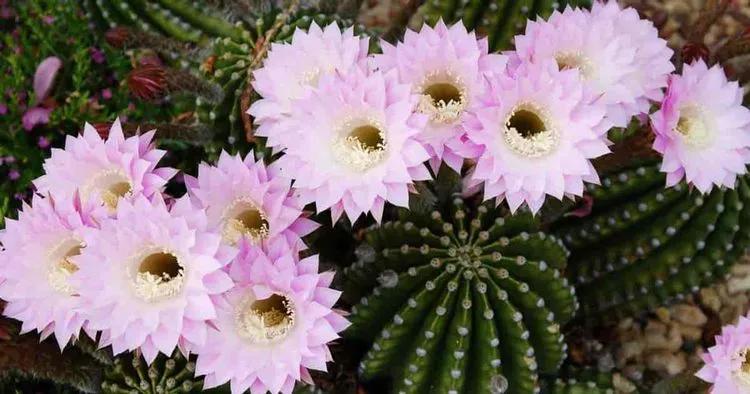 At first, the echinopsis cactus resembles a forest hedgehog: it is the same rolled into a ball and the same prickly and round as the popular inhabitant of forest glades and meadow minks. But as soon as Echinopsis is about to bloom, it begins to grow rapidly upward. And in nature, its height can reach 200 cm! Not bad for someone who was originally a hedgehog, right?
At first, the echinopsis cactus resembles a forest hedgehog: it is the same rolled into a ball and the same prickly and round as the popular inhabitant of forest glades and meadow minks. But as soon as Echinopsis is about to bloom, it begins to grow rapidly upward. And in nature, its height can reach 200 cm! Not bad for someone who was originally a hedgehog, right?
Golden Echinopsis is a variety of this cactus, which is the smallest of all. The globular plant blooms in golden and yellow colors and looks great at the same time.
Rebutia
 The miniature rebutia of the marsoner is unusual in that its flowers "come out" not from the top of the head, like most other cacti, but from the base of the stem. The homeland of this plant is considered to be the mountainous regions of such South American countries as Argentina and Peru. The first flowering of rebutia usually occurs in the second year of the life of this representative of the mountain flora. The flowers that appear on the cactus are distinguished by bright shades. The colors can be completely different, but the shades will always be catchy and saturated.
The miniature rebutia of the marsoner is unusual in that its flowers "come out" not from the top of the head, like most other cacti, but from the base of the stem. The homeland of this plant is considered to be the mountainous regions of such South American countries as Argentina and Peru. The first flowering of rebutia usually occurs in the second year of the life of this representative of the mountain flora. The flowers that appear on the cactus are distinguished by bright shades. The colors can be completely different, but the shades will always be catchy and saturated.
The rebutia blooms for only 48 hours a year, starting from the second year of life. It usually blooms from mid-spring to early summer. Therefore, if you leave home for the weekend, you may well miss this moment.
